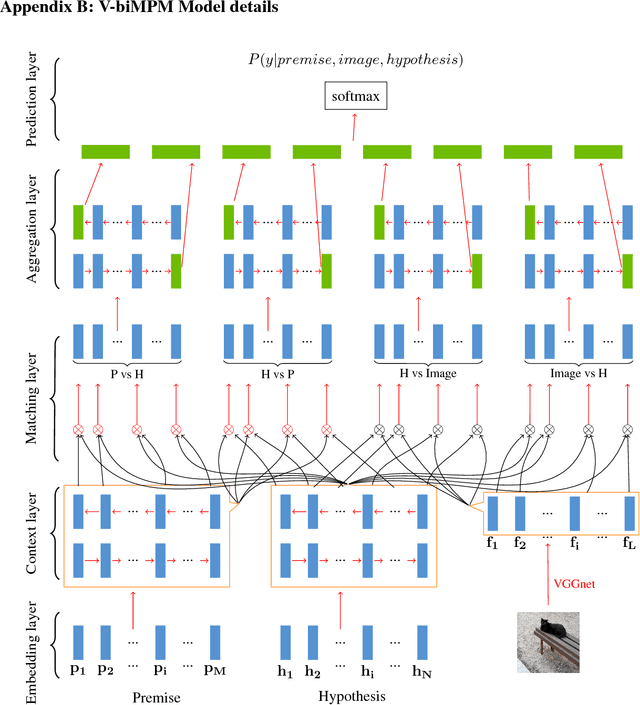Hoa Trong Vu
Grounded Textual Entailment
Jun 14, 2018



Abstract:Capturing semantic relations between sentences, such as entailment, is a long-standing challenge for computational semantics. Logic-based models analyse entailment in terms of possible worlds (interpretations, or situations) where a premise P entails a hypothesis H iff in all worlds where P is true, H is also true. Statistical models view this relationship probabilistically, addressing it in terms of whether a human would likely infer H from P. In this paper, we wish to bridge these two perspectives, by arguing for a visually-grounded version of the Textual Entailment task. Specifically, we ask whether models can perform better if, in addition to P and H, there is also an image (corresponding to the relevant "world" or "situation"). We use a multimodal version of the SNLI dataset (Bowman et al., 2015) and we compare "blind" and visually-augmented models of textual entailment. We show that visual information is beneficial, but we also conduct an in-depth error analysis that reveals that current multimodal models are not performing "grounding" in an optimal fashion.
 Add to Chrome
Add to Chrome Add to Firefox
Add to Firefox Add to Edge
Add to Edge